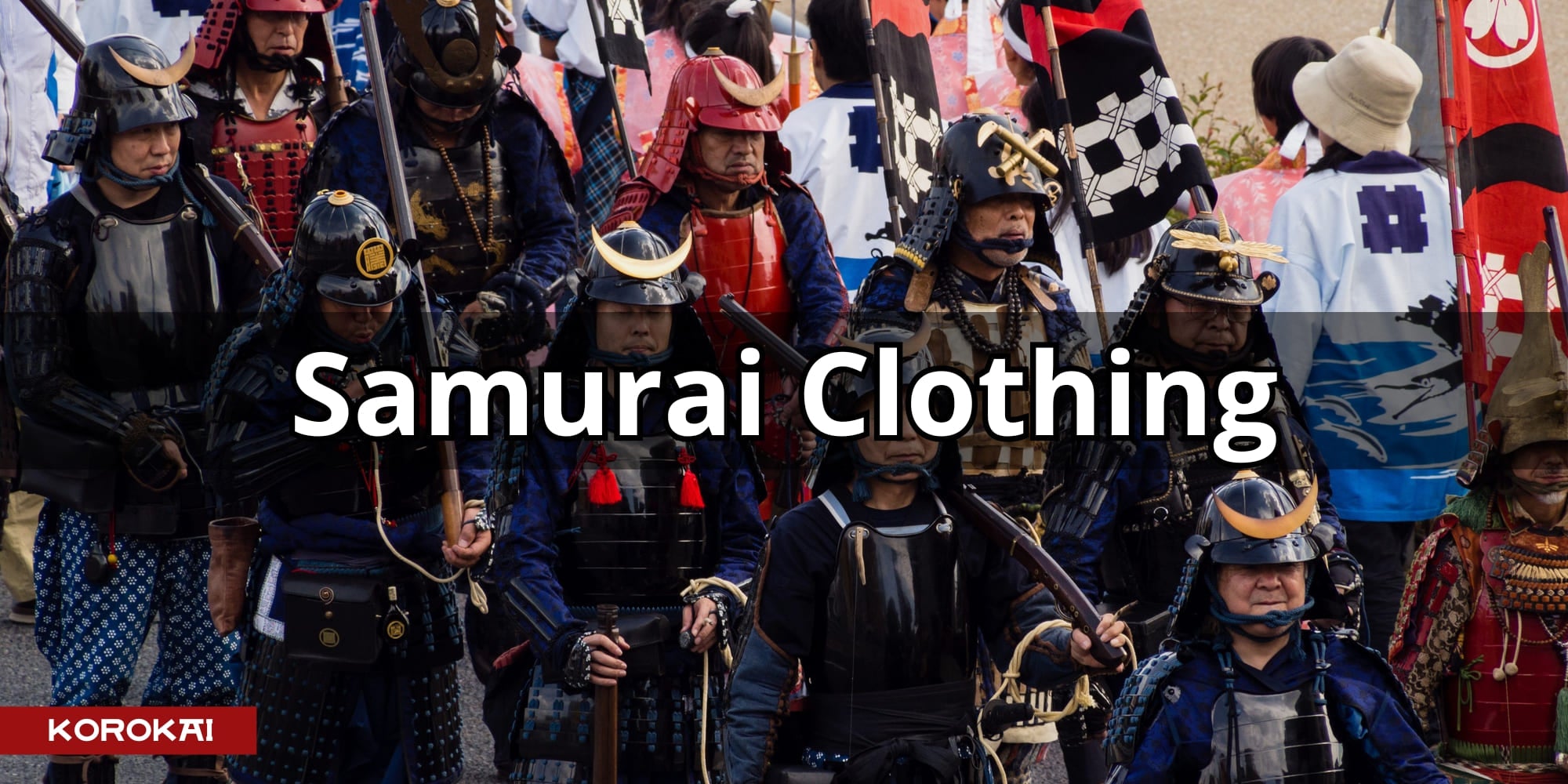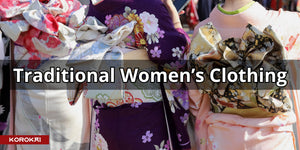Part I: Samurai Armor
Samurai armor, known as "Yoroi," represents a fascinating blend of functionality, craftsmanship, and cultural symbolism. Each piece of this intricate armor was designed with meticulous care to provide maximum protection in battle while ensuring freedom of movement. From the imposing helmet (Kabuto) to the formidable chest armor (Dō), samurai armor was more than just battlefield gear; it was a deeply personal ensemble that reflected the wearer's status, identity, and martial spirit. This section explores the key components of samurai armor, revealing the art and ingenuity behind these historic defenses.
1. Kabuto

The Kabuto was more than just protective; it was a symbol of status and personal identity. Crafted meticulously from metal and leather, these helmets were designed to protect warriors from lethal blows. The structure often featured a series of articulated plates, ingeniously joined together to provide both strength and flexibility. Ornamentation varied widely, with family crests or intricate designs that reflected the wearer's lineage and achievements.
Each Kabuto was uniquely tailored to its owner, incorporating functionality with artistic expression. The helmet’s bowl, constructed from multiple riveted plates, was crowned with a decorative piece known as a "maedate". This customization made each piece not only a functional item of war but also a deeply personal artifact, often passed down through generations as a treasured heirloom.
2. Maedate

The Maedate, an ornamental front piece, was a distinctive component of the Kabuto, adding a layer of personalization and psychological warfare to the samurai's armor. These crests were crafted from materials like wood or metal, molded into shapes that ranged from mythological creatures to simple, abstract symbols. Each design held significance, often representing the samurai's family, beliefs, or aspirations.
This feature not only enhanced the aesthetic appeal of the helmet but also functioned as a psychological tool. The maedate's visibility in battle made it a focal point, transforming the Kabuto into a statement of the warrior's presence and prowess on the battlefield. Its intricate design and symbolic value elevated the ceremonial aspect of the armor, reflecting the spiritual layers of samurai tradition.
3. Mengu

The Mengu forms an integral part of the samurai’s armor, designed to protect the face while projecting ferocity. These face masks were crafted from iron or lacquered leather, featuring detailed expressions ranging from snarling demons to stoic warriors. Each Mengu was specifically tailored to strike fear into the heart of the enemy, embodying the warrior spirit.
Beyond their intimidating designs, Mengu also offered practical protection. They covered critical areas like the cheeks and nose, often extending down to protect the throat. The design allowed for ventilation and visibility, ensuring that the samurai remained composed and alert during combat. This combination of function and psychological strategy showcases the sophisticated craftsmanship and strategic depth of samurai warfare.
4. Nodowa

The Nodowa is a crucial piece of samurai armor, specifically designed to protect the throat and neck. Made from sturdy materials like iron or hardened leather, these neck guards were essential for survival in close combat. They snugly wrapped around the neck, connected to the rest of the armor, offering a seamless defense that was both effective and flexible.
Functionally, the Nodowa was more than just protective gear; it symbolized the samurai’s preparedness and resilience. The design was engineered to prevent fatal sword strikes to vital areas, allowing samurai to engage in battle with confidence. Its integration into the armor ensemble demonstrates the meticulous attention to detail characteristic of samurai warfare, where every piece had a purpose and every detail mattered.
5. Sode

The Sode are the substantial shoulder plates worn by samurai to shield them from downward strikes and projectiles. These large, rectangular armor pieces were crucial for protecting the upper arms and shoulders, areas particularly vulnerable during swordplay or archery. Made from multiple layers of lacquered metal or leather, the Sode were both durable and relatively lightweight, allowing for mobility.
Strategically designed, the Sode were attached to the Do (chest armor) with silk or leather cords, enabling flexibility and movement. This adaptability was vital for samurai, who needed to maneuver easily in battle. The balance between protection and mobility underlines the sophisticated design of samurai armor, reflecting a deep understanding of combat dynamics and the importance of protective gear in samurai culture.
6. Kote

The Kote served as essential armored sleeves in the samurai's defensive gear, extending from the shoulder down to the fingertips. Typically made from chain mail or fabric lined with small plates of metal, these sleeves protected the arms from cuts and arrows. Their design allowed for considerable flexibility, crucial for wielding weapons effectively on the battlefield.
Kote were often connected to the rest of the armor via ties at the shoulder, ensuring a secure fit that moved seamlessly with the samurai's actions. This integration highlights the ingenuity of samurai armor in combining protection with the necessary range of motion for battle. The balance of mobility and defense in the Kote exemplifies the strategic craftsmanship of traditional Japanese armorers.
7. Dō

The Dō is the central piece of samurai armor, encasing the torso to protect vital organs from the blows of an enemy. This cuirass is typically made from iron or leather plates, laced together in a manner that balances robust protection with flexibility. The design of the Dō allowed for significant coverage while still enabling the samurai to move freely and breathe comfortably during intense physical exertion.
Traditionally, the Dō wraps around the body and fastens at the side or back, making it adjustable and suitable for various body sizes. Its practical design and strategic placement underscore the precision with which samurai armor was crafted, aiming to provide maximum defense without hindering the warrior's agility and speed during combat.
8. Dō-maru

The Dō-maru is a variant of the traditional Dō, distinct for its wraparound design that encircles the samurai's body completely. This style was particularly favored for its snug fit, which offered excellent protection without sacrificing mobility. Crafted from small metal plates laced together, the Dō-maru conformed closely to the wearer's shape, ensuring a secure and comfortable fit.
This armor style was adaptable, accommodating various body movements and combat styles, making it ideal for samurai who valued flexibility in their engagements. The Dō-maru’s comprehensive coverage provided a superior defense mechanism, enveloping the wearer in a protective shell that was both efficient in battle and emblematic of the meticulous craftsmanship of samurai armor.
9. Uwa-Obi

The Uwa-Obi is a wide belt worn by samurai to secure the upper part of their armor and support various accessories and weapons. Made from thick, durable fabric, the Uwa-Obi wrapped around the torso several times, providing a sturdy base for the heavy armor components like the Dō. It also played a critical role in distributing the weight of the armor and weaponry evenly across the samurai's waist.
The Uwa-Obi belt was essential not only for its functional benefits but also as a point of attachment for katana, daggers, and other tools. The practical design of the Uwa-Obi allowed samurai to quickly draw their weapons in combat, demonstrating its integral role in the functionality and effectiveness of samurai gear.
10. Sarashi

The Sarashi is a long, white cotton cloth wrapped tightly around the torso, serving as a foundational undergarment beneath the samurai’s armor. It provides extra padding, reducing discomfort caused by the heavier armor plates, and helps absorb sweat, keeping the wearer cool and dry. This underlayer is crucial for maintaining comfort during long hours of wearing armor and engaging in battle.
In addition to its practical uses, the Sarashi also plays a role in ensuring a better fit for the armor pieces above it, preventing them from shifting during movement. By improving the overall stability of the armor setup, the Sarashi enhances a samurai’s agility and effectiveness in combat, making it a vital but often overlooked component of the traditional samurai attire.
11. Haidate

The Haidate are protective aprons worn by samurai to safeguard their thighs during battle. Made from small metal plates or padded cloth linked together, these aprons attach to the lower edge of the Dō and extend downwards to cover the upper legs. This design provides vital protection against strikes to the legs, a common target in melee combat.
Functionally, the Haidate allows for considerable flexibility and movement, crucial for samurai who needed to maneuver quickly and efficiently on the battlefield. The strategic placement and construction of these aprons not only enhance the defensive capabilities of samurai armor but also underscore the thoughtful engineering behind each component, ensuring that mobility is not sacrificed for protection.
12. Suneate

The Suneate are essential shin guards in the samurai's armor ensemble, designed to protect the lower legs from cuts and blows. Constructed from vertical metal plates or chain mail, these guards are tied around the calves with silk or leather cords, ensuring a secure fit that does not hinder movement. The protection extends from the knee to the ankle, covering vulnerable areas during combat.
By safeguarding the shins, the Suneate allow samurai to advance or retreat with fewer risks from enemy strikes. Their design balances durability and flexibility, demonstrating the samurai's need for both robust defense and agility. This thoughtful integration of protection and mobility reflects the sophisticated approach to armor in samurai warfare.
Part II: Everyday Samurai Clothing
Everyday clothes for the samurai was designed to be as functional as it was symbolic, reflecting their esteemed role within feudal Japanese society. From the versatile Hakama trousers to the durable Jika-Tabi boots, each item was tailored to meet the demands of both ceremonial presence and practical utility. These garments not only facilitated the samurai's physical activities but also conveyed their social status and adherence to bushido, the samurai code of conduct. This section explores the traditional clothing that characterized the samurai's daily life, blending practicality with cultural significance.
13. Kasa

The Kasa is a traditional Japanese hat, primarily known for its wide brim that offers protection from the sun and rain. While not part of the combat armor, it was commonly worn by samurai during travel or casual duties to shield them from the elements. Made from tightly woven straw, the Kasa is lightweight and durable, providing practical environmental protection without burdening the wearer.
This hat also played a role in concealing the samurai's identity or status when necessary, adding a layer of anonymity in public spaces. Its simple but effective design reflects the samurai’s practical considerations for comfort and discretion in less formal settings, illustrating the versatility of their gear.
14. Kamishimo

The Kamishimo is a traditional samurai ensemble worn during formal occasions, comprising the hakama (pleated trousers) and the kataginu (a sleeveless jacket with stiff, extended shoulders). This attire not only enhanced the wearer's stature but also symbolized their authority and social status. Made from stiff, heavy fabric, the Kamishimo was designed to convey power and demand respect.
This ceremonial garb, worn over the kimono, served both aesthetic and symbolic purposes. The distinctive silhouette, especially the exaggerated shoulders of the kataginu, was crafted to increase the samurai's presence and reinforce their role within the hierarchical society. The Kamishimo reflects the deep cultural significance of appearance and status.
15. Montsuki

The Montsuki is a formal kimono distinguished by the presence of family crests (mon) placed on the garment. Typically black in color, the Montsuki features up to five mon, symbolizing the wearer's lineage and affiliating them distinctly within samurai hierarchy. This traditional men's clothing is reserved for ceremonial occasions, underscoring the wearer’s status and heritage in a visually powerful manner.
The placement of the crests on the chest, back and sleeves reinforces the formality and importance of Montsuki, ensuring that the samurai's identity and family pride are clearly displayed. This outfit not only respects traditional customs, but also reinforces the cultural importance of family ties and samurai honor.
16. Tattsuke-bakama

The Tattsuke-bakama are traditional trousers worn by samurai, designed for both practicality and ease of movement. Resembling modern riding pants, these trousers are tightly fitted at the lower leg and more relaxed at the thigh, making them ideal for activities requiring mobility such as horseback riding or martial arts. They are typically fastened with cords at the waist and knees, ensuring a secure fit that facilitates active engagement without hindrance.
This garment combines functionality with the aesthetic norms of samurai clothes, reflecting the dual requirement for comfort and decorum in samurai attire. The Tattsuke-bakama's design allows for freedom of movement while maintaining the dignified appearance expected of a samurai, making it a versatile and essential piece of their wardrobe.
17. Hakama

The Hakama are traditional Japanese trousers worn by samurai, recognized for their flowing, pleated design that provides both dignity and flexibility. Often made from silk or sturdy cotton, these trousers are tied at the waist and fall to about the ankles, offering protection and modesty while allowing for full range of motion. The Hakama were typically worn over a kimono, making them a staple in both martial and ceremonial attire.
The design includes several deep pleats that are both functional and symbolic, representing virtues such as sincerity and valor, which are integral to samurai philosophy. This combination of practicality and symbolism makes the Hakama a quintessential part of the samurai’s attire, adeptly suited for various aspects of their life, from the battlefield to formal gatherings.
18. Tabi

Traditional Japanese socks that have been an essential part of samurai clothing, especially noted for their unique split-toe design. This distinctive feature allows for better grip and balance, particularly when wearing traditional footwear like zori or geta sandals. Made from soft yet durable cotton, Tabi are comfortable and functional, supporting the samurai's need for mobility.
In addition to their practical use, Tabi also play a role in maintaining hygiene and comfort by absorbing sweat and reducing friction inside the footwear. Their design exemplifies the thoughtful integration of practicality and traditional aesthetics in samurai clothing, ensuring that even the smallest details are tailored to meet the demands of both combat and daily life.
19. Waraji

The Waraji are traditional Japanese sandals crafted from straw or hemp, designed to be durable and suitable for long distances on foot. These sandals were an essential part of the samurai's gear, particularly when traveling or engaging in activities outside the formal confines of the castle or court. The rugged construction provides necessary traction and endurance across varying terrains, from village paths to rugged mountain trails.
Waraji were often worn over Tabi socks to enhance comfort and reduce wear from friction. The practical design reflects the samurai's preparedness for all aspects of their duty, emphasizing functionality without sacrificing the adherence to traditional forms. This footwear illustrates the samurai's pragmatic approach to gear, ensuring readiness and resilience in their demanding roles.
20. Jika-Tabi

The Jika-Tabi are Robust variant of traditional Tabi socks, featuring a split-toe design and a reinforced sole. These specialized boots are adapted for outdoor use, offering the agility and tactile feedback of barefoot movement while providing substantial protection against rough terrain. Made from durable materials, Jika-Tabi are ideal for samurai and modern workers alike, accommodating the demands of active labor and martial practices.
Their design not only supports rigorous activities but also integrates seamlessly with other traditional garments, maintaining the samurai’s aesthetic and functional requirements. Jika-Tabi exemplify the fusion of practicality and traditional style, catering to the needs of samurai during travel or battle, where mobility and foot protection are paramount.












